Oceania
Oceania is sometimes described as a continent; however, it is a vast region where the waters of the Pacific Ocean — rather than land borders — separate nations.
The countless small islands are known for their white sand with swaying palm trees, astounding coral reefs, and rugged volcanoes. Oceania also contains the deserts of Australia and the highland rainforests of Papua New Guinea, as well as indigenous tribal communities and modern world cities side by side.
Regions
Australia, New Zealand, and Papua New Guinea are by far the largest countries in this pseudo-continent, and the former two are the most visited by travellers. Oceania includes the vast island nation groupings of Polynesia (extending from New Zealand to the north and east), Melanesia (to the west, and south of the equator), and Micronesia (almost wholly north of the equator).

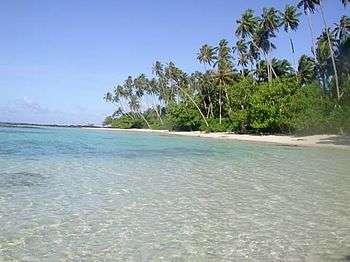
| Australia The largest and most populous country in Oceania, often considered a continent by itself. Frequent destinations include the state capitals of Adelaide, Brisbane, Darwin, Hobart, Melbourne, Perth, and Sydney, as well as the national capital, Canberra. It has a wide range of climates, from temperate to tropical, and a range of landscapes, from deserts to alpine regions and rainforests. |
| New Zealand Although, like most countries, tiny in size compared to Australia, a major destination and widely regarded as one of the most pristine and beautiful countries on earth. Well-developed facilities for travellers. Geographically — and to a significant degree culturally — New Zealand is part of Polynesia: the indigenous Māori are Polynesian, and more Polynesians live in greater Auckland than in all the other cities of Polynesia put together. |
| Papua New Guinea Geographically part of Melanesia, the islands have tropical rainforests, great scenery, and diverse cultures. The main island of New Guinea is shared with Indonesia. An adventurous, rarely visited travel destination where caution is advised. |
| Polynesia (Cook Islands, Niue, Samoa, Tonga, Tuvalu and several territories, such as American Samoa, French Polynesia, Hawaii and Norfolk Island) No other name quite conjures up images of paradise like this one. Stunning paradisical islands sprawling for thousands of miles across the remote South Pacific. |
| Melanesia (Fiji, New Caledonia, Solomon Islands, Vanuatu) Closely related to the ethno-cultural make-up of the oft-included Papua New Guinea. Fiji is the most visited country in Melanesia. |
| Micronesia (Federated States of Micronesia, Guam, Kiribati, Marshall Islands, Nauru, Northern Mariana Islands, Palau) The tiny Micronesian islands fall on or north of the Equator, and see less tourist and business travel than the rest of the island groupings. Palau is arguably the most interesting destination among these islands. |
Cities
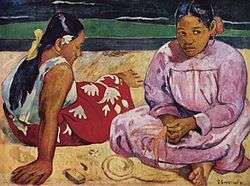
- Apia — a little shabby and run-down, but useful as an initial stop-off point for first-time visitors to Samoa
- Auckland — bustling multicultural metropolis that scores well in quality-of-life polls
- Christchurch — known as the Garden City, and still rebuilding after a devastating earthquake
- Melbourne — multicultural and sports-mad, this vibrant city includes many cultural institutions
- Nouméa — beautiful beaches, colonial mansions and French flair – at a price
- Papeete — not a tropical paradise, but has shopping, eating, drinking and is nice for people-watching
- Port Moresby — spread-out capital of Papua New Guinea – can be dangerous
- Suva — the major commercial and political centre of Fiji; Nadi is the tourist capital
- Sydney — the largest city in Australia, home to the Harbour Bridge and Opera House
Other destinations
- Abel Tasman National Park — enjoy one of New Zealand's "Great Walks" by the clear waters of Tasman Bay
- Aitutaki — the classic picture postcard of a palm tree fringed tropical island with turquoise waters
- Bora Bora — the most beautiful lagoon of French Polynesia, but incredibly pricey
- Coral Coast — amazing white sand beaches and palm trees
- Great Barrier Reef — the largest coral formation in the world, great for diving
- Moorea — budget alternative to Bora Bora with beautiful scenery
- Pentecost Island, Penama — see the land divers risk more than the contents of their nambas
- Uluru-Kata Tjuta National Park — the iconic rock formations in the middle of the Outback
- Vava'u — a group of more than 50 islands in Tonga, a common destination for yachties and calving whales
Understand

As its name indicates, this region is defined by large expanses of ocean dotted with many small and large island nations. The climates range from tropical to desert to near arctic.
Australasia is a more narrow region, consisting of Australia, New Zealand, New Guinea and nearby islands.
Colonialism by European powers has had a pervasive influence on the social landscape and culture of most of the region. British colonialism has made cricket part of the Australian and New Zealand summer, and has also resulted in either one or both forms of rugby - and more recently Rugby Sevens - becoming an integral part of the cultures of Australia, New Zealand, Papua New Guinea, Fiji, Tonga and Samoa. The bringing of British indentured labour from India to harvest sugar cane in Fiji has led to long-term political unrest, but also means that Nadi has some of the best kofta balls to be had outside of Mumbai. Francophone New Caledonia sees the modern capital and tourist hub Noumea surrounded by Melanesian villages rarely visited.
Get in
By plane
See the country articles for detailed information on how to Get in.
The major countries of Australia and New Zealand offer connections from all inhabited continents, including a few direct flights from South America and South Africa. The main air hubs in the region are at Sydney (SYD IATA, Melbourne (MEL IATA), Auckland (AKL IATA), Brisbane (BNE IATA) and Perth (PER IATA). There are other gateways offering opportunities to get in and interesting itineraries. Air France connects New Caledonia direct with Tokyo and Paris and also flies to Tahiti. Onward connections to Sydney and Auckland are possible. Fiji Airways connects Nadi with Los Angeles, San Francisco, Honolulu, Hong Kong, Tokyo and Singapore, with onward connections through to Australia, New Zealand and the other Pacific island nations. Tahiti is connected to Los Angeles, and you can fly to the Cook Islands direct from there. Air New Zealand provides a service to Tonga and Samoa from Los Angeles and Auckland. The Los Angeles service is subsidized by the New Zealand government as a form of aid to the two countries. Manila, Guam and Honolulu offer a gateway to many countries of Micronesia, mainly on United Airlines. Air Niugini also operates flights from Port Moresby to Hong Kong, Singapore and Tokyo.
Qantas operates the only nonstop flight between Oceania and Europe, between London-Heathrow and Perth.
The smallest islands with less tourism present additional challenges to get to. Many are entirely deserted, and some have restrictions on access.
By boat
Several South Pacific cruises traverse the vast ocean, but a few berths are available for the patient traveller on bulk freighters or container ships plying the trade routes. The distances are enormous, as the Pacific Ocean is larger than the entire land mass of the planet.
Get around
By plane
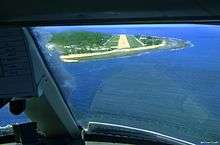
Without a yacht, and a lot of time, the only way for travellers to get around between the main destinations of Oceania is by plane. Auckland, Brisbane, Sydney have good connectivity to the region. It is usually possible to fly from the west coast of the United States through to Sydney or Auckland via Hawaii, Tahiti, Fiji or even the Cook Islands. Nadi Airport (NAN IATA) in Fiji serves as the main air hub for the Pacific islands, so flying to other Pacific island nations would likely require a plane change there.
However, air routes tend to come and go depending on whether the airlines find them profitable or not. Much of English-speaking Polynesia receives regular flights from Air New Zealand. Melanesia is mainly serviced by national and Australian airlines. Fiji Airways also has a relatively good network of flights form their hub in Nadi to the other Pacific island nations. Don't expect daily flights. Patience is required.
Flying between Micronesia and the other two areas is problematic and may involve flying all the way to Honolulu or a complicated route through Manila, Sydney and Auckland.
Some flight options within Oceania, among others, are:
- Guam has connections through to the United States, Japan, and a usually very expensive connection to Cairns in Far North Queensland.
- Cook Islands has connections to Tahiti.
- Samoa has good connections to Auckland and Sydney, as well as weekly connections with Fiji and Hawaii. Air link between Samoa and American Samoa are more reliable than transit by sea between these neighbours.
- Solomon Islands has connections through to Fiji and Vanuatu.
- Vanuatu has connections through to Fiji and New Caledonia.
- New Caledonia has flights to Auckland.
By ship
There are some options for boats, cruise ships, private yachts, adventure cruises, and even cargo ships.
Consult the guide for the destination you are visiting.
Talk
Many indigenous languages are spoken throughout Oceania, and with the exception of the Australian aboriginal languages, most of these languages belong to the Austronesian language family which also includes other languages such as Malay, Indonesian and Tagalog.
Due to a history of British and American colonisation, English is the dominant language in Australia and New Zealand, and a common second language throughout much of the Pacific islands with the exception of French-ruled New Caledonia and French Polynesia. In some areas, such as Papua New Guinea and Vanuatu, English-based creoles are co-official with standard English, and may be hard to foreigners to understand, though educated locals are almost always able to switch to standard English if necessary. French is naturally the main language in New Caledonia and French Polynesia, while Hindi is also spoken by a significant minority in Fiji, primarily those of Indian descent.
See
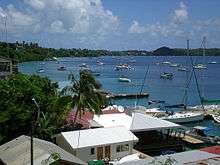
All island groups are fascinating and with time and money you can spend months travelling around. There are some stunningly beautiful islands (Samoa, Cook Islands, French Polynesia), some fascinating cultures and festivals, some wonderful diving and totally deserted beaches.
Colonial influences and history
Having histories dominated by colonisation, nearly all destinations give travellers opportunities to explore the often grim, but also interesting, stories of the past.
Wildlife
- See also: Australasian wildlife

There is some unique wildlife to be discovered in the region. Australia and Papua New Guinea are the homes of marsupials, the species of mammals that include cute favourites like kangaroos, koalas, wombats and possums, and also the Tasmanian devil. Here you will also find the monotremes, in the species of platypus and echidnas, the only mammals in the world to lay eggs.
In New Zealand you can stumble upon (or more easily, see in human-made facilities) the shy and mostly nocturnal kiwi – a flightless bird that has given the people of the country their nickname. Other flightless birds include the takahe, thought extinct until 1949, and the kakapo (night parrot). Other evolutionary oddities include the ancient tuatara, bats that hunt on the ground, and frogs that don't croak. A quarter of the world's seabirds breed in the New Zealand region.
Marine life is abundant and diverse throughout and one of the main reasons for travellers to explore this part of the world. Tropical fish and colourful reefs are perfect matches for scuba divers and snorkellers, but much can also be seen from the deck of a boat. You have the opportunities to see larger animals such as manta rays, dolphins and even whales.
In southern Australia and in New Zealand, seals, sea lions and penguins can be seen in their natural habitat, with Kangaroo Island, Phillip Island, coastal Otago and Stewart Island being popular sites.
Pacific War remembrance
- See also: Pacific War
The Pacific theatre of World War II involved land, sea and air battles between the Axis (mainly Japan) and the Allies (mainly the United States and Australia), from 1941 to 1945.
The remnants of the war can be seen at many places, such as the Kokoda Track on New Guinea.
Sports
Cricket is a popular sport in Australia and New Zealand, and is typically played over the summer.
Rugby is one of the most popular sports in Oceania, with rugby union being the dominant code in New Zealand, Fiji, Tonga and Samoa, and rugby league being dominant in Australia and Papua New Guinea. In international competition, New Zealand are widely regarded as the undisputed kings of rugby union, while Australia occupies the same position in rugby league.
Do
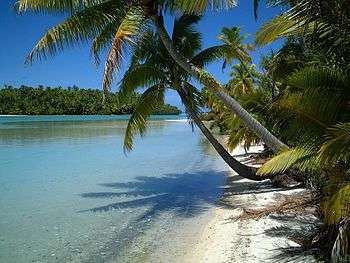
Swinging the hammock
The pristine, white sandy beaches found throughout the South Pacific are great for just lying back and enjoying the peace and quiet.
Scuba diving and snorkeling
There are locations for diving throughout Oceania. For coral and tropical fish, explore the Great Barrier Reef in Queensland, the Ningaloo Reef in Western Australia, Fiji has some reef around Nadi, and spectacular unspoilt, brightly coloured coral on the more remote islands. Samoa is favoured by scuba divers. Cook Islands has accessible reef just off the beach on the main islands. Vanuatu has accessible reef too, but the facilities make it more challenging to access than Fiji. There are diving opportunities in the temperate waters of Tasmania and New Zealand too.
There are good opportunities to dive to shipwrecks. The Rainbow Warrior off New Zealand's North Island is one of the more famous ones, and the oceans of Micronesia have many interesting relics from World War II. The Marshall Islands and Bikini atolls are known as quite a ship graveyard, offering some of the most interesting wrecks in the world, including submarines and the only aircraft carrier accessible to divers. Most of the wreck sites are not for beginners though.
Sailing
Vava'u in Tonga is a popular destination for yachts crossing the Pacific. Yachts can also be chartered there.
Fishing
Being an oceanic area, there are countless opportunities for great fishing experiences.
Hiking and trekking

Australia and New Zealand are home to some very significant and famous hiking trails, for example the ones of the Flinders Ranges, Abel Tasman and Tongariro National Parks. The rugged, volcanic landscapes of many of the Pacific Islands offer good opportunities as well.
Adventure sports
New Zealand has become famous as a place with a well developed infrastructure for almost any kind of adventure and extreme sports. As well as being the birthplace of commercial bungy-jumping, you will also find skydiving, paragliding, river rafting, power boating, rock climbing, cave exploration and a long list of what seems as self-invented combinations. The north of Queensland and Tasmania have many opportunities as well. Also, the Blue Mountains near Sydney are great for rock climbing, canyoning and hiking.
The volcanoes and many caves to be found throughout the Pacific islands are fit for some adventurous exploration as well, and the many tropical islands are perhaps even prettier when watched gliding above them.
Skiing and winter sports
Although not the first thing coming to mind, there are snow sports in the southern parts of Oceania. New Zealand has reliable winter snowfalls, and 10-12 ski areas, mostly in the South Island. These include Treble Cone and Cardrona (Wanaka), The Remarkables and Coronet Peak (Queenstown), Mt Hutt near Christchurch and Whakapapa and Turoa on Mt Ruapehu in the North Island. Many northern hemisphere race and Olympic teams train in New Zealand during the northern summer. The Snowy Mountains in New South Wales have the largest ski resorts in the southern hemisphere.
Eat
Although staple foods from outside the region, such as rice and flour, now have a firm foothold, the traditional staples of roots and tubers remain very important. The cheapest is usually cassava, which also plays a food security role as it can be left in the ground for a long time. Sweet potato is a very important crop and is found in most parts of Oceania with the major producing area being the Highlands of Papua New Guinea. Taro and yam are also widespread. The latter is the most valuable of the roots and tubers and there are many customs associated with its cultivation. In the Sepik area of Papua New Guinea, for example, sex between married couples is supposed to be forbidden while the yams are growing. On the other hand, in the Trobriand Islands the yam harvest is a period of sexual liberty.
In Australia and New Zealand, the food culture is largely similar to Europe and Northern America. Nevertheless, there are still some unique dishes and ingredients to be found, some known by the native inhabitants before the arrival of the Europeans, and others invented in more recent times. Thanks to recent immigration, Asian dishes and restaurants are also widely available and popular.
Drink
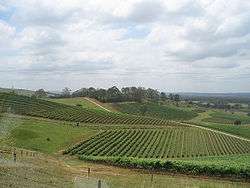
Kava is a drink produced from the roots of a plant related to the pepper plant and found mainly in Polynesia as well as Fiji and Vanuatu. It has a mildly narcotic effect. Other names include 'awa (Hawai'i), 'ava (Samoa), yaqona (Fiji), and sakau (Pohnpei). Traditionally it is prepared by chewing, grinding or pounding the roots of the kava plant. In Tonga, chewing traditionally had to be done by female virgins. Pounding is done in a large stone with a small log. The product is then added to cold water and consumed as quickly as possible, invariably as part of a group of people sitting around and sharing the cup. Check the rules before taking any out of the country, however, as importing kava can be illegal.
If interested in wine tourism, head to Australia or New Zealand. The former is one of the largest wine producers in the Southern Hemisphere.
Respect
With the exception of Australia and New Zealand, which are rather secular, all countries in Oceania are strongly conservative Christian moral societies. As such, expect all businesses to be closed on Sundays, when virtually the entire country would be at church. If you happen to be there on a Sunday, going to church would generally be a good opportunity to mingle with the locals.
Stay safe
Almost all of Oceania is safe for visitors, with the exception of Papua New Guinea, which remains a travel destination only for the more adventurous. In particular, Port Moresby has one of the highest violent crime rates in the world.
Stay healthy
Vanuatu, Solomon Islands, Papua New Guinea all have areas where malaria is a risk. Fiji, New Caledonia, the Cook Islands, Samoa and the other islands are malaria-free.
Dengue fever, chikungunya and Zika virus is increasingly present in tropical areas. Avoid mosquito bites night and day, especially during an outbreak.
The islands may be remote but sexual diseases know no boundaries. Usual precautions apply.